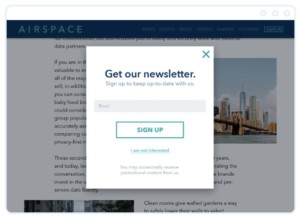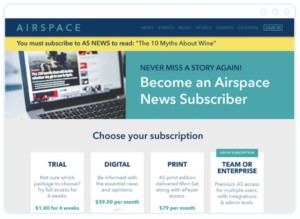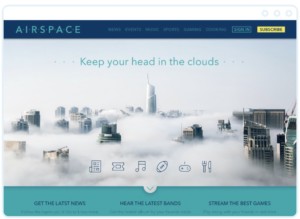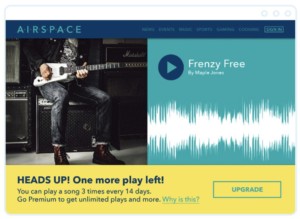Why should publishers care about their authentication strategy? Because the industry is changing and authentications are the way publishers can grow and connect their inventory to the advertiser’s target audiences with precision. Publishers that adopt an authentication strategy will gain a competitive advantage and increase their CPMs.
What is Authentication?
Authentication is simply any time a user provides directly identifiable personal data to a media owner or publisher. This could be in the form of an email address, phone number, or even a social log-in. Typically, this information is provided as part of a sign-up or registration process for a newsletter or account.
There are many strategies publishers can employ to garner new authentications, as well as tactics that support them. In this blog, we’ll be highlighting one of the most common—the content wall.
Content walls
Content walls are pop-ups that block access to content until a piece of directly identifiable personal data—such as an email address—is provided or a premium subscription is purchased. They are one of the most common tactics employed to support the strategies on the previous pages. Content walls are heavily favored by news organizations, which typically have the benefit of an existing readership that may have paid for paper copies in the past.
There are many ways to approach content wall implementation. The right approach depends on your organization’s size and resources available.
Common content wall implementation styles:
- Interstitial: Not a true wall in the sense that it’s just a pop-up that asks for an email address, but is able to be closed and does not truly gate content. Starting with an interstitial is an easy way to get started as you dig into what your visitors are willing to pay for premium content.

- Hard content wall: Blocks access to any content until either authentication is provided or a premium subscription is purchased.

- “Freemium” content wall: Allows free access to the bulk of the content, but reserves a “subscribe only” section of higher value content, typically in-depth research or content targeted toward a more niche audience.

- Metered content wall: Offers access to all content for free up to a certain limit, e.g., “Read X articles for free per month.”

- Dynamic content wall: Metered approach to content walls based on behavioral data. These typically involve assigning propensities to readers and adapting to their preferences. For example, people who visited the previously ungated sports section ten times last month tend to register if a wall is shown on their fourth or fifth visit.
Download The Publisher Addressability Playbook: Strategies You Need to Thrive in a New Trusted Ecosystem, to learn which other strategies and tactics you can start experimenting with to add to your authentication strategy today.